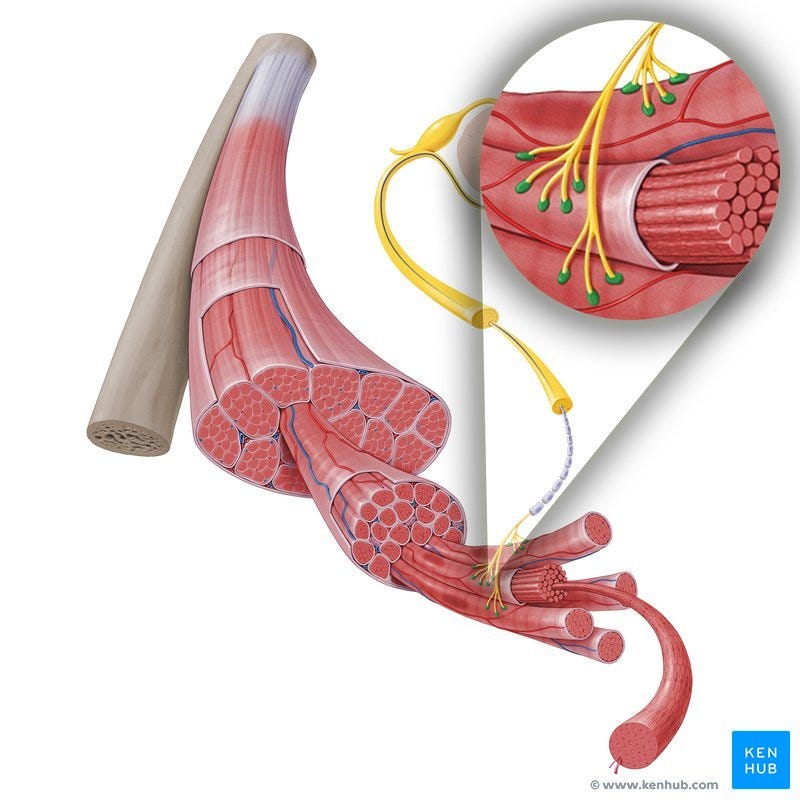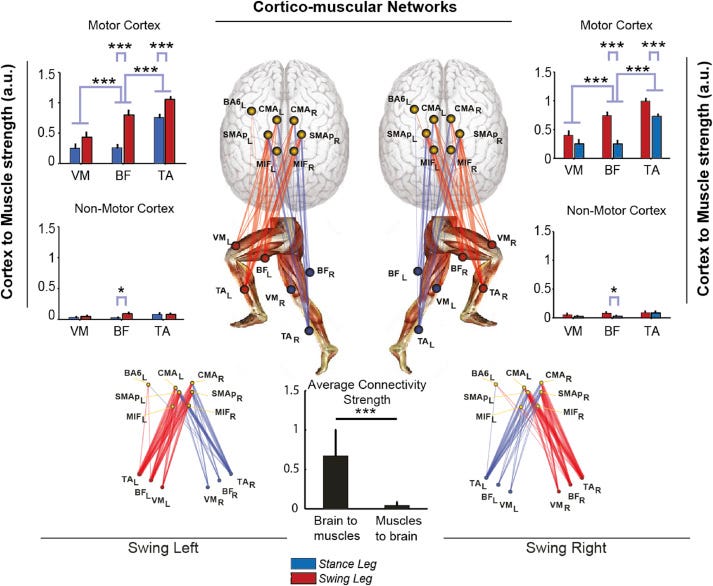Neuro Athletics is a twice-weekly newsletter designed specifically for high-performing men and women who want science-backed strategies to optimize brain health, performance, and longevity. Subscribers include executives, coaches, professional women, health-conscious mothers, and women dedicated to peak cognitive and physical performance. If you're not already subscribed, join 69,000+ people who receive actionable insights directly in their inbox each week.
Story at a Glance:
A landmark study links stronger leg muscles to better cognitive function and healthier brain structures, making brains appear about three years younger.
Building leg strength promotes improved brain circulation, stimulates essential growth factors like BDNF, and reduces brain shrinkage.
Regular leg-focused exercises, particularly resistance and explosive movements, provide a practical and effective approach for women in perimenopause to protect cognitive health.
Neuro Athletes,
After the age of 30, we lose 3-5% of muscle mass per decade if we are inactive but even more scary is that we lose strength at a far more rapid rate.
Why?
Because your brains ability to activate those muscles, especially in your legs is breaking down before the muscles themselves. What begins as muscle weakness is often a communication problem between the brain and the body not just a matter of age and muscle atrophy.
This miscommunication happens at the neuromuscular junction, the place where your motor neurons and muscle fibers meet and that signal degrades if you don’t maintain it.
As women approach perimenopause, the body undergoes significant hormonal and physical changes, often accompanied by subtle cognitive shifts—like those moments when names or details escape you. Surprisingly, one of the best ways to combat cognitive decline might not be a brain-training app or crossword puzzle, but strengthening your legs.
Here's the fascinating science behind it.
Today’s Newsletter Is Brought To You By Supp.co
Navigating supplements shouldn’t feel like guesswork. But even as a neurphysiologist I’ve spent decades trying to make sense of what’s actually high quality, effective, and safe.
That’s why I’m so excited about a tool I wish I had years ago: SuppCo
It helps you evaluate the quality of your supplements with a TrustScore based on 29 rigorous, evidence-based standards, everything from manufacturing practices to third-party testing. It even checks for questionable inactive ingredients like dyes, fillers, and allergens; things I care deeply about and most people never realize they’re consuming.
I believe in it so much that I’ve joined SuppCo’s team as their Expert on Longevity and Brain Health, there’s 6 protocols inside the app to help guide you, based on what I’ve seen work clinically, time and time again.
The best part is it’s completely free.
The Leg-Brain Connection: An In-depth Look
A pivotal longitudinal study from King's College London, involving 324 healthy female twins aged between 43 and 73, revealed that greater leg power, specifically leg extensor power (LEP), significantly predicts better cognitive function and healthier brain structure over a decade.
Researchers carefully controlled for genetics, socioeconomic status, early-life factors, and lifestyle variables like smoking, alcohol consumption, diet, and physical activity.
Key finding: The study identified a robust protective relationship between leg strength and cognitive health. Specifically, an increase of just 40 watts in leg power was linked to cognitive aging benefits equivalent to making your brain approximately three years younger.
Why Legs Specifically?
Leg muscles are among the largest and most active muscles, playing a crucial role in everyday movements such as walking, standing, and balancing. The repetitive use of these muscles boosts circulation, enhances metabolism, and triggers neuroprotective responses—essential for maintaining brain health.
Actionable Insights for Women in Perimenopause
1. Prioritize Strength Training
Compound Movements: Emphasize exercises like squats, lunges, and leg presses to build comprehensive leg strength.
Consistency and Progression: Aim for strength training 2–3 times per week, gradually increasing resistance and intensity.
2. Incorporate Power Movements
Explosive Exercises: Activities such as jump squats or box jumps significantly boost leg extensor power and overall muscle fitness.
3. Maintain Regular Activity
Consistent, Low-intensity Movement: Daily walking or other gentle, repetitive activities can notably maintain and even enhance leg muscle strength.
How Exactly Does Leg Strength Support the Brain?
Improved Blood Circulation
Greater muscular strength ensures enhanced blood flow, supplying the brain with oxygen and nutrients vital for cognitive health.
Enhanced Neuroplasticity
Regular physical activity stimulates brain-derived neurotrophic factor (BDNF) production, a protein essential for neuron health, growth, and cognitive adaptability.
Prevention of Brain Shrinkage
The King's College research found that stronger leg muscles were associated with larger grey matter volumes and smaller brain ventricles, indicating healthier brain aging.
Key Takeaways for Your Cognitive Health Journey
Begin Early: Early integration of leg-strengthening exercises can provide cumulative cognitive protection over time.
Balance Your Exercise Routine: Combining strength and aerobic exercises offers optimal cognitive and physical health benefits.
Monitor and Adjust: Regularly assess and track your strength progress and cognitive function improvements for sustained motivation.
During perimenopause, preserving cognitive clarity becomes a priority. Strengthening your legs is not merely a fitness goal; it's a powerful investment in preserving and enhancing your brain’s future health.
Start today—give your brain the strong foundation it deserves!
To learn more about gaining strength and muscle, watch this episode
















Share this post